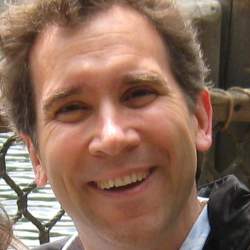
Last month, I attended a meeting in Chicago of stakeholders in creating a K-12 CS Education Framework for the US. Code.org is organizing and funding the effort. The stakeholders meeting included representatives from several states and districts implementing computer science education for their students. Other groups sending representatives included Apple, Google, and the Computer Science Teachers Association (CSTA).
Hadi Partovi, CEO of Code.org, opened the meeting by describing the need for a framework. Several states are currently defining computer science standards for their students, and CSTA is about to revise their standards. Code.org is receiving queries for what those standards should look like. They decided to turn the questions around, and to fund a community effort to define a framework for standards. Pat Yongpradit, Chief Academic Officer for Code.org, explained the difference between a Framework and Standards. Standards are expectations for students. A framework is guidance for instruction. It serves to define the great ideas that frame the standards. Standards are policy documents about what a group wants for their students.
We learned about the issues and politics of standards fromleaders in mathematics and science education who gave us advice from their experience in efforts like Common Core and Next Generation Science Standards (NGSS). NGSS also used a framework+standards structure. Michael Lach at the University of Chicago (see bio) led science and mathematics education in the US Department of Education during the first Obama administration. Heidi Schweingruber at the National Academies (see bio) co-directed the study that led to the frameworks that structured NGSS. Michael Gilligan at Achieve (see bio) helps states implement NGSS.
Michael Lach had three messages for the whole meeting, then five more just for states and districts.
- Coherence is the most critical part of getting frameworks and standards accepted. You have to get people to buy-in, to agree that the frameworks and standards are the right ones.
- Attention is important, but it’s not the same as quality. It’s great that CS education is getting so much attention right now. What gets produced must have high quality, or it won’t withstand scrutiny and criticism.
- In the end, the decisions are all about states and districts. The US public education system is distributed — the federal government doesn’t control education. Individual states and districts have to make CS education happen for themselves, not because of any national framework. He pointed out that not all states have the capacity to do CS education well, and those that don’t, shouldn’t even try to make it work.
Michael Lach, Heidi, and Michael Gilligan all talked about what didn’t work well in NGSS and Common Core. While there were long public comment periods for both efforts, they weren’t long enough, or not enough people were solicited to comment. There was still too many concerns about these standards when they were finalized.
Michael’s five pieces of advice to the states and districts in the room were:
- Go slow. Quality matters. If you don’t get it right, districts will decide that their initial stereotype was right, that computer science really is just for geeky white boys and not for everyone.
- Wrestle with the tradeoffs. Lots of kids in school don’t get art, music, or even breakfast. Where does computer science fit in there? We can’t frame the debate as being CS versus arts and music. Those tradeoffs are exactly what school leaders are dealing with when trying to make a place for computer science (see report here).
- Be serious about buy-in and community support. During the NGSS and Common Core comment periods, the research-backed evidence base was used to defend critiques of how mathematics was being taught, or about the evolution or climate change theories being taught — yet the evidence base was not large enough to defend against all those attacks. We do not have a large evidence base on computer science in K-12 schools, which makes our standards more susceptible to critique. "How do we know that that would work?" We have to be able to address these kinds of questions.
- Push on computer science to resolve the fights. The "math wars" (see Wikipedia entry) prevented implementation of new mathematics education standards for many years. Fights over details (e.g., Mac vs. PC?) will paralyze school and district administrators. Computer science needs to play a role in resolving these fights.
- Be humble. Listen and learn from others. We in CS sometimes think that we can do things differently from other disciplines. Sometimes we can, but probably not when it comes to curriculum.
Heidi and Michael told us that all curriculum work lives in a political context. While only 3% of all US students are home-schooled (see data here), they were surprised at how politically powerful the home school movement is among the legislatures in some states. The home school movement can stop adoption of standards in some states.
Heidi told us that having the National Academies behind the science education framework "inoculated" the standards based on that framework. While different parties might disagree on the details of standards, the backing of a respected body helped the framework to succeed. Even states that have rejected NGSS have developed their own standards based on the National Academies’ framework.
Right now, large school districts like New York City, Chicago, and San Francisco are developing plans to teach computer science to all their students. States like Massachusetts, Washington, Nebraska, and California are developing standards about what all their students should know about computer science. We can use standards efforts in mathematics and science education to help us understand the mistakes to avoid and the characteristics that lead to successful standards.



Join the Discussion (0)
Become a Member or Sign In to Post a Comment